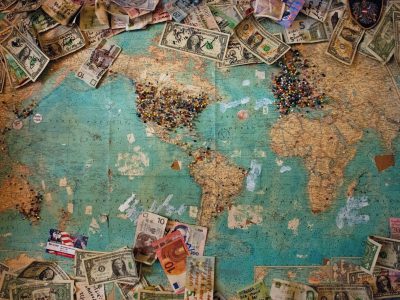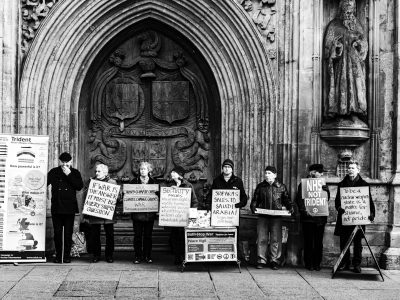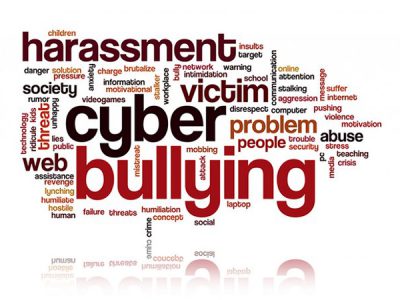WP_Post Object
(
[ID] => 2203
[post_author] => 2
[post_date] => 2020-11-26 17:49:39
[post_date_gmt] => 2020-11-26 17:49:39
[post_content] => Part of the Trump campaign's strategy was to feed into the Christian right's martyr complex.
When it comes to the religious vote in America’s 2020 presidential election, some clearly biased commentators are trying to spin cherry-picked exit poll data into a tale about white evangelical defectors helping former Vice President Joe Biden win. But it was Washington Post columnist Dana Milbank who got it right when he summarized the Trump 2020 phenomenon as largely about white evangelical Christians who “were fired up like no other group by Trump’s encouragement of white supremacy”—versus “everybody else.”
As evidence of his claim, Milbank cites exit poll data that shows white evangelicals, who represent about 15 percent of the U.S. population, comprise about a quarter of the electorate overall—and a full 40 percent of Trump voters. To be sure, majorities of all white Christian demographics voted Trump in 2020 as in 2016; in addition, a very small percentage of Black Christians, and a larger minority of Latinx Christians voted for Trump this year. White evangelicals, however, remain far and away America’s most solidly pro-Trump demographic, and they turned out in droves to support him. And to say that Trump’s white evangelical base is not taking the news of his election loss well would be quite the understatement.
Despite some high-profile Republican leaders and “respectable evangelicals” like Michael Gerson chiding them for a “failure of character,” many of these evangelical Trump supporters have refused, for weeks, to recognize that the election is over. In doing so, they are literally demonizing Democrats and playing up the same old wild persecution fantasies that have long since animated this authoritarian demographic.
On the notoriously reactionary 700 Club, the flagship Christian Broadcasting Network program, 90-year-old host Pat Robertson asserted, “It isn’t over yet,” and called on his audience to pray to overturn the election. “In the name of Jesus, I bind the spirit of delusion that has come over this land,” Robertson prayed, adding, “We will not surrender our nation, we will not give up this great country, and Satan, you cannot have it, in the name of Jesus.” Satan, he suggested, “wants to turn this nation over to socialism.” Robertson declared: “I still think Trump’s ultimately going to win.”
Those who grew up being taught that reality is shaped by “spiritual warfare” will instantly recognize Robertson’s language of “binding demons.” When applied to politics, such thinking is clearly incompatible with democracy. It has also been on prominent display throughout Trump’s presidency in the figure of his spiritual advisor, Paula White, who has also publicly prayed against the “demonic” forces supposedly trying to “hijack the will of God” for the election.
The prominence of neo-Pentecostal and charismatic Christians like White has been building within evangelicalism for decades, as conservative, mostly white evangelical subculture has become, along with the G.O.P., increasingly authoritarian. And it’s not just older evangelicals. While many young people leave evangelicalism, those who opt to stay in the faith even as it has careened into virulent extremism are, if anything, even more hardline than their parents.
Christians like White, Robertson, and their followers are invested in the “prophecies” that many of them have made over the last few years holding that Trump has been “chosen” to pursue God’s will for the United States. Elite celebrity preachers like White and Robertson might be cynically cashing in on the anxieties of rank-and-file believers, but there is no doubt that many evangelicals truly fear a Biden administration will “persecute” them.
According to political scientist Ryan Burge, evangelicals have a “martyr complex.” During the election cycle the Trump campaign explicitly played into this, with Trump casting Biden, a devout Catholic who has vowed to protect both religious freedom and LGBTQ rights, as anti-religious. “Essentially they’re against God if you look at what they’re doing with religion,” Trump said, while his son Eric claimed of his father:
He’s literally saved Christianity. I mean, there’s a full-out war on faith in this country by the other side. The Democratic Party, the far left, has become the party of the atheists, and they want to attack Christianity, they want to close churches. They’re totally fine keeping liquor stores open, but they want to close churches all over the country.
The fantastical message that Christianity is “under attack” matches what evangelicals themselves believe and want to hear. For the majority of them, the definition of “religious freedom” is the power to discriminate against members of other religions and to impose their narrow interpretation of Christianity on those who do not share it, using the coercive force of law. They regard having to coexist with LGBTQ people and provide us with equal accommodation in the public square as “persecution.”
Meanwhile, conspiracy-minded evangelicals frequently indulge in even darker fantasies, imagining their religious practice could actually be banned and that they could be arrested or even executed for practicing their faith by, for example, refusing to solemnize a same-sex marriage. Of course, these scenarios are about as likely to play out in America as a blanket ban on the consumption of apple pie.
Meanwhile, Eric Trump’s false claim that Democrats “want to close churches” is being widely circulated on Twitter. This is a bad faith and deliberately dishonest interpretation of America’s patchwork of county, municipal, and state-level public health requirements limiting the size of social gatherings, often including church services, which have been linked to numerous incidents of mass infection. Along with their reckless insistence that church services should continue as usual—sometimes in the form of lawsuits—prominent evangelicals have turned sensible mask requirements into fodder for the culture wars, using rhetoric that paints them as victims of a supposedly anti-Christian government. Some conservative Christians, including Kanye West, even claim to believe that the coronavirus vaccine, when it becomes available, will confer “the Mark of the Beast” on those who receive it as the Antichrist rises to power.
This reality-averse majoritarian self-victimization is a hallmark of fascism; it will not, unfortunately, simply disappear when President-elect Biden takes office. A dangerous right-wing politics of grievance will continue to shape American political life so long as conservative Christians continue to hold outsize influence and disproportionate power, a situation that is facilitated by the undemocratic Electoral College and equal representation of all states in the Senate, regardless of their population.
As I write this, Trump-supporting evangelicals continue to deny that Biden won the election and to insist that they will never accept the Democratic leader as president. They are also railing against C.D.C. advice that people refrain from attending large Thanksgiving gathering this year because they are likely to further exacerbate the already spiking spread of COVID-19 infections.
On prosperity gospel televangelist Kenneth Copeland’s Victory Channel, for example, evangelist Mario Murillo declared, “I will never believe that Joe Biden is the president of the United States.” Invoking the language of spiritual warfare, Murillo called on Christians to “rebuke” the election results and described the role of the church in current events as “supernatural.”
“Our role is to command the strongholds to come down,” Murillo exclaimed, referring to the charismatic Christian notion that demonic “principalities and powers” can be defeated through prayer.
As Maya Angelou famously said, “When someone shows you who they are, believe them the first time.” When far-right Christians like Murillo tell us they will never accept Biden (or, frankly, any Democrat) as the legitimate president of the United States, proponents of democracy need to believe them. People who think their political opponents are literally demonic, and who continue to incite irrational fears of persecution—even as the federal courts, which Trump stacked with right-wing authoritarians, continues to deliver for their culture wars agenda—are not people who can be reasoned or compromised with. Nothing short of total control will ever be enough for them.
How do we deal with that stark reality? It is important to maintain the pressure, no matter the odds of success, for democratic reforms that would limit the power of white evangelicals and other authoritarians. This means pushing for the abolition of the Electoral College; for adding seats to the Supreme Court as a means of restoring fairness after the G.O.P.’s recent power grab; and admitting DC and Puerto Rico as states.
We must also maintain high public awareness of Christian nationalist extremism. Over time, a more realistic national conversation about white churches and Christian nationalism should contribute to the political delegitimization of Christian extremists in the eyes of the public, thus opening up new political possibilities for the future.
Biden, unfortunately, has called for a clearly impossible unity, which means that his administration is unlikely to lead the way here. Still, it seems he is willing to exercise power in the pursuit of justice; that, at least, will help fend off the theocratic threat for the time being.
[post_title] => Why do so many evangelicals continue to deny that Biden won the election?
[post_excerpt] => People who think their political opponents are literally demonic, and who continue to incite irrational fears of persecution, are not people who can be reasoned with.
[post_status] => publish
[comment_status] => closed
[ping_status] => open
[post_password] =>
[post_name] => many-evangelicals-continue-to-deny-that-biden-won-the-election
[to_ping] =>
[pinged] =>
[post_modified] => 2024-08-28 21:11:30
[post_modified_gmt] => 2024-08-28 21:11:30
[post_content_filtered] =>
[post_parent] => 0
[guid] => http://conversationalist.org/?p=2203
[menu_order] => 235
[post_type] => post
[post_mime_type] =>
[comment_count] => 0
[filter] => raw
)











